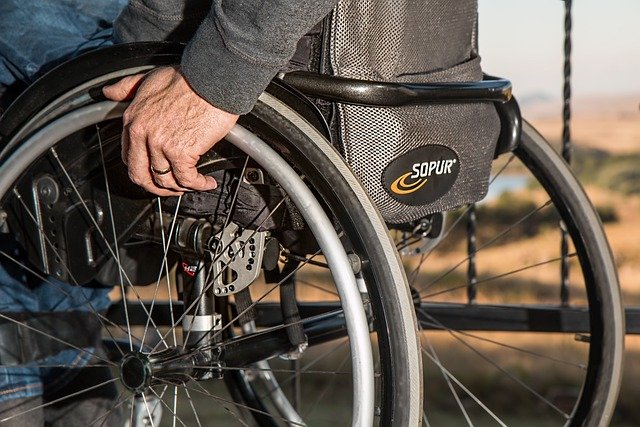Guide to Choosing and Using a Lightweight Foldable Mobility Scooter
Lightweight foldable mobility scooters offer independence and convenience for individuals with mobility challenges. These compact devices combine portability with functionality, allowing users to navigate various environments while maintaining an active lifestyle. Understanding the essential features, specifications, and practical considerations helps ensure you select the right mobility solution for your specific needs and circumstances.

Mobility scooters have revolutionized independence for millions of people worldwide, with lightweight foldable models leading the way in convenience and versatility. These innovative devices bridge the gap between traditional wheelchairs and full-sized scooters, offering a practical solution for those who need assistance with mobility but value portability and ease of use.
Key Features and Specifications
When evaluating lightweight foldable mobility scooters, several critical specifications determine their suitability for different users. Weight capacity typically ranges from 220 to 350 pounds, while the scooter’s own weight usually falls between 40 to 70 pounds when folded. Motor power varies from 250 to 500 watts, directly affecting climbing ability and overall performance on different terrains.
Speed capabilities generally range from 3 to 6 mph, with most models featuring adjustable speed settings for safety and comfort. Ground clearance, typically 2 to 4 inches, determines the scooter’s ability to navigate curbs, small obstacles, and uneven surfaces. Seat dimensions and adjustability options significantly impact user comfort during extended use.
Portability and Folding Mechanism
The folding mechanism represents the core advantage of these mobility devices. Most models feature either manual folding systems that require physical manipulation of levers and joints, or automatic folding mechanisms activated by remote control or button press. Folding time varies from 10 seconds for automatic systems to 2-3 minutes for manual versions.
When folded, dimensions typically measure between 24-30 inches in length, 16-20 inches in width, and 12-18 inches in height. This compact size allows storage in car trunks, closets, or under tables. Some models include carrying handles or wheels for easier transport when folded, while others come with dedicated travel bags for protection during storage or transport.
Battery, Range and Charging
Battery technology significantly impacts the scooter’s practical usability. Most lightweight models use lithium-ion batteries, offering better energy density and longer lifespan compared to traditional lead-acid alternatives. Battery capacity ranges from 5Ah to 15Ah, directly correlating with travel range and charging time.
Typical range varies from 8 to 20 miles per charge, depending on factors such as user weight, terrain, weather conditions, and riding style. Charging time generally spans 3 to 8 hours for a complete cycle, with some models offering fast-charging capabilities. Many scooters feature removable batteries, allowing indoor charging without moving the entire unit.
Safety, Comfort and Usability
Safety features include anti-tip wheels, automatic braking systems, LED headlights, and reflective elements for visibility. Speed limiters and gradual acceleration prevent sudden movements that could cause instability. Emergency stop functions and horn systems provide additional safety measures in crowded areas.
Comfort elements encompass padded seats with back support, adjustable armrests, and ergonomic handlebars. Suspension systems, while adding weight, significantly improve ride quality on uneven surfaces. Control interfaces typically feature intuitive joystick or handlebar-mounted controls with clear displays showing battery level, speed, and diagnostic information.
Maintenance, Transport and Buying Considerations
Regular maintenance ensures optimal performance and longevity. Basic care includes cleaning after use, checking tire pressure, and monitoring battery health. Professional servicing may be required annually for motor inspection, brake adjustment, and electrical system checks.
Transportation considerations extend beyond folding capabilities. Airline regulations vary regarding battery types and capacity limits for air travel. Train and bus policies differ by region and operator. Weight distribution when lifting and ergonomic handling techniques prevent injury during transport.
| Model Type | Provider | Key Features | Price Range |
|---|---|---|---|
| Basic Manual Fold | Drive Medical | 250W motor, 12-mile range, 55 lbs | $800-$1,200 |
| Auto-Fold Standard | Pride Mobility | Remote folding, 15-mile range, 60 lbs | $1,500-$2,200 |
| Premium Lightweight | Golden Technologies | 500W motor, 20-mile range, 48 lbs | $2,000-$3,000 |
| Travel-Specific | Merits Health | Airline approved, 10-mile range, 42 lbs | $1,200-$1,800 |
Prices, rates, or cost estimates mentioned in this article are based on the latest available information but may change over time. Independent research is advised before making financial decisions.
Purchasing decisions should consider warranty coverage, local service availability, and compatibility with existing mobility aids. Insurance coverage varies by region and policy type, with some health insurance plans covering partial or full costs when medically necessary. Rental options provide opportunities to test different models before committing to purchase.
Lightweight foldable mobility scooters represent a significant advancement in personal mobility technology. By carefully evaluating features, specifications, and practical requirements, users can select devices that enhance independence while fitting seamlessly into their lifestyle and transportation needs.




